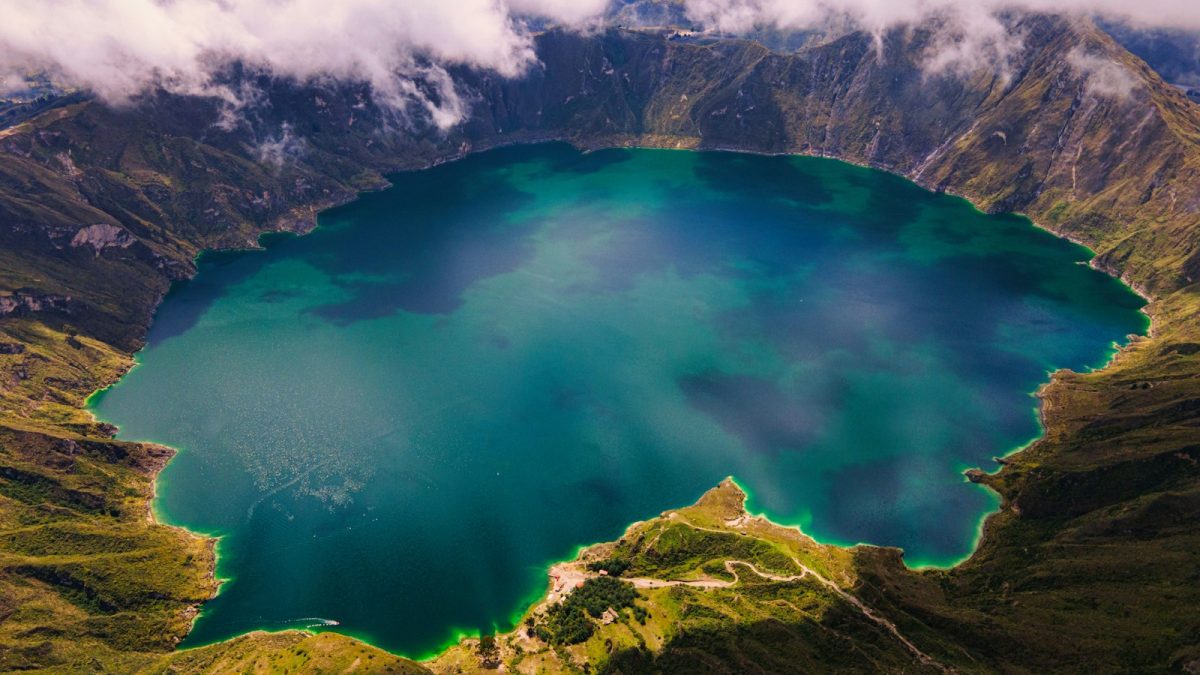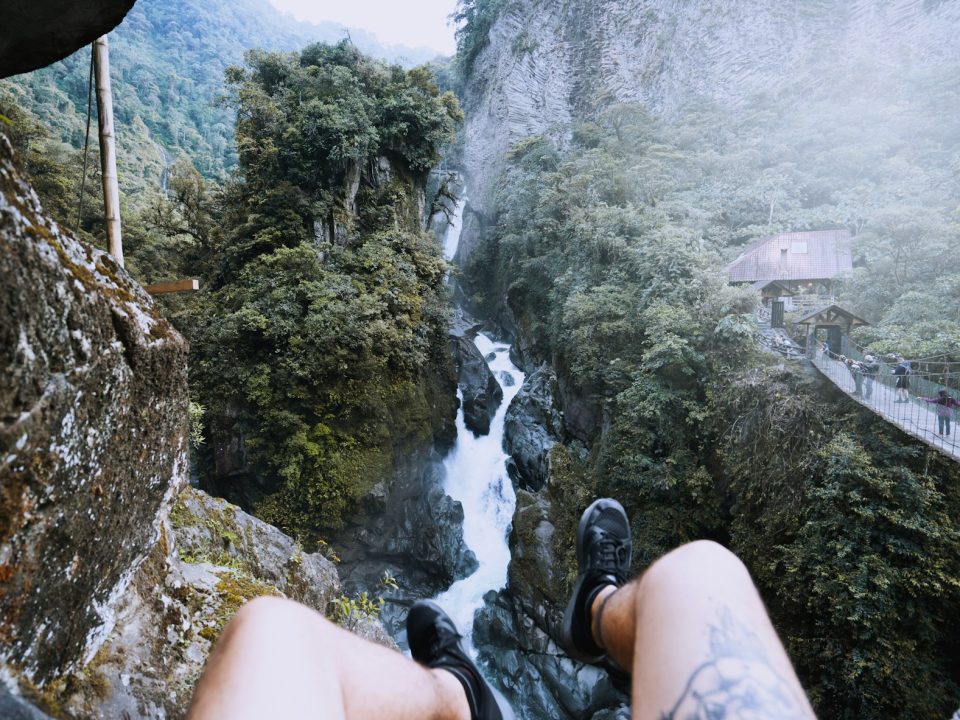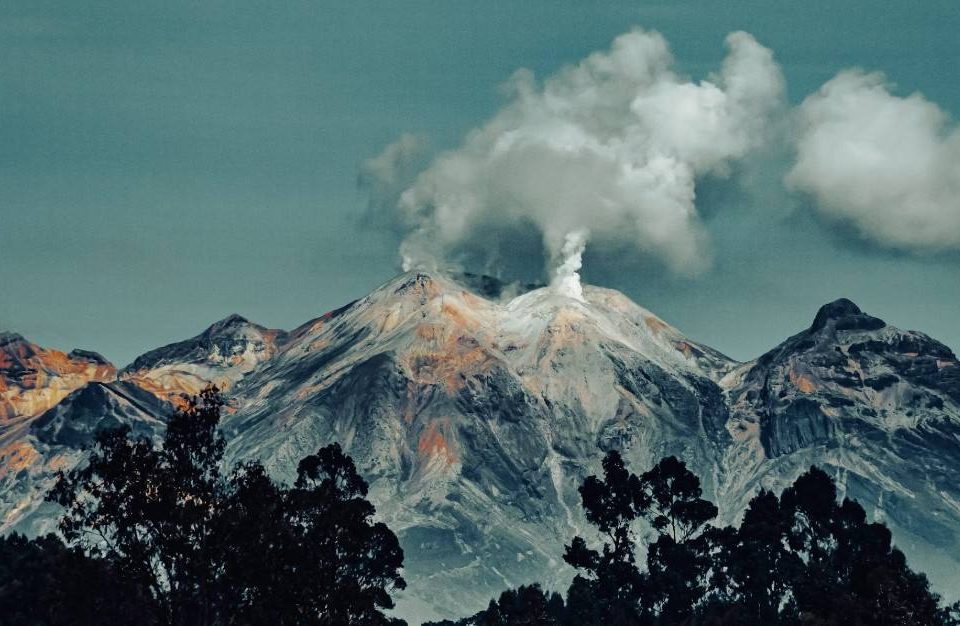
Ecuador Travel Safety: 7 Essential Advice for a Worry-Free Trip
May 2, 2025The Quilotoa hike is an unforgettable journey through the breathtaking landscapes of Ecuador. This multi-day trek takes you around the stunning Quilotoa Loop, leading to the mesmerizing Laguna Quilotoa, a striking crater lake formed by an ancient volcanic eruption. Hikers are treated to diverse scenery, vibrant local culture, and the challenge of high-altitude trekking. Prepare to be captivated by the natural beauty and the unique experiences that await you on this remarkable hike.
Quilotoa Hike Overview
What is the Quilotoa Loop?
The Quilotoa Loop is a popular trekking route in the highlands of Ecuador that connects several small villages and the stunning Quilotoa Crater Lake. While it’s referred to as a loop, the trek typically starts and ends in Latacunga, with some sections traveled by bus. The loop showcases incredible landscapes, including rolling hills, deep valleys, and charming local settlements, making it one of the most scenic hikes in the Andes. The trek generally takes about three days, covering approximately 40 kilometers, with varying elevation gains and picturesque views along the way.
Getting to Quilotoa
Reaching the starting point for the Quilotoa hike is relatively straightforward. From Quito, you can take the Metro de Quito to the Quitumbe Bus Station, where buses frequently depart for Latacunga, taking about 1.5 hours. Once in Latacunga, catch a bus to either Sigchos or Isinlivi, which takes around two hours. It’s advisable to check bus schedules ahead of time, as they can change. Many hikers opt to leave extra luggage in Latacunga for a lighter trek. The bus ride offers beautiful views of the Ecuadorian countryside, setting the stage for your adventure.
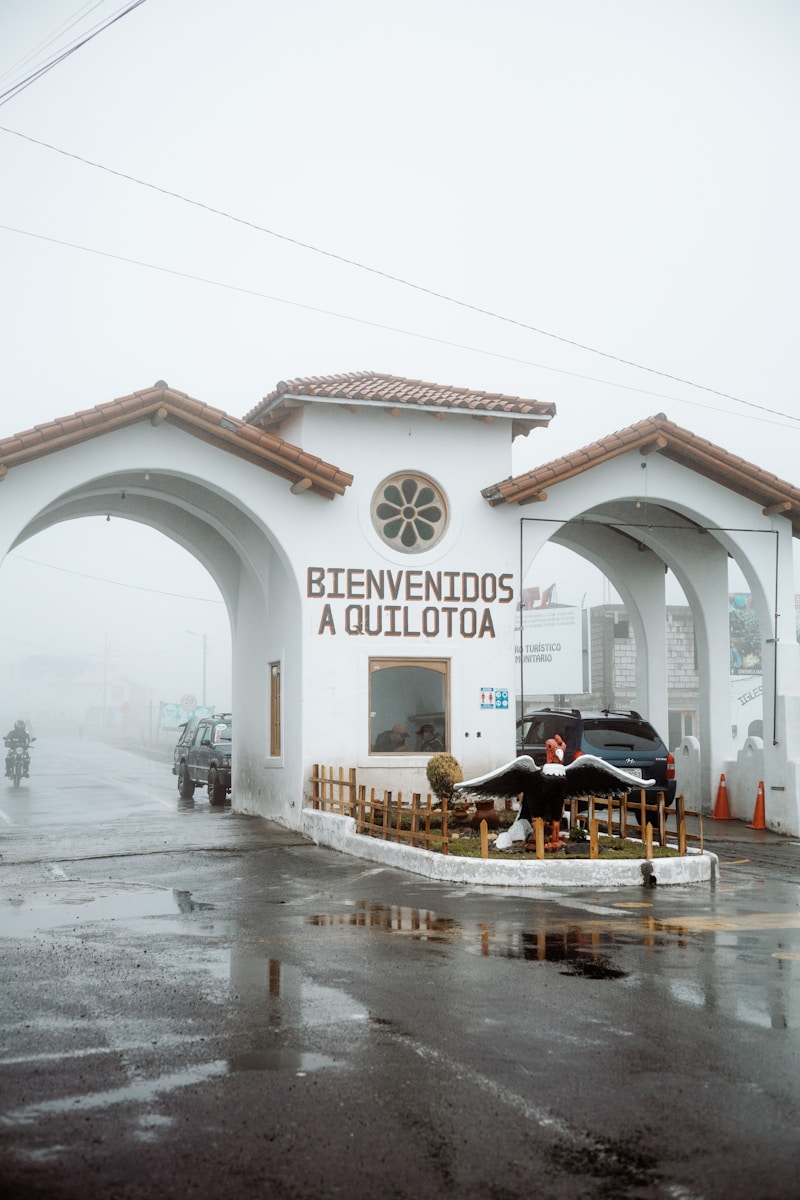
Best Time to Hike Quilotoa
The ideal time to embark on the Quilotoa hike is during Ecuador’s dry season, which runs from June to September. During this period, the weather is generally sunny and pleasant, perfect for hiking. While the rainy season from October to May can still provide sunny mornings, afternoon storms are common, which might interrupt your hiking plans. If you’re flexible with your schedule, aim for the dry season to maximize your chances of enjoying clear skies and stunning views throughout your trek.
Stunning Viewpoints Along the Quilotoa Hike
The Crater Lake Viewpoint
One of the most breathtaking moments on the Quilotoa hike is witnessing the stunning Laguna Quilotoa from the crater rim. This viewpoint offers a panoramic view of the vibrant turquoise water, surrounded by steep walls of the caldera. The contrast of colors, with the bright blue lake set against the lush greenery and rocky terrain, creates a mesmerizing scene that is perfect for photography and reflection. It’s a reward after the challenging ascent, and many hikers find themselves captivated by the sheer beauty of this natural wonder.
The Quilotoa Rim
Hiking along the Quilotoa Rim provides countless opportunities for breathtaking vistas. The rim trail encircles the crater and offers various perspectives of the lake and the surrounding mountains. As you walk, you’ll find designated viewpoints perfect for taking a break and soaking in the scenery. The elevation can make the trek more challenging, but the stunning views are worth every step. Don’t forget to bring your camera—these landscapes are some of the most photogenic in Ecuador!
The Waterfall Vista
Another highlight along the Quilotoa Loop is the waterfall vista, where you can pause to enjoy the soothing sounds of cascading water. This area is not only a great spot for relaxation but also offers incredible photo opportunities. The lush vegetation and the sight of water flowing down the rocks create a serene environment, contrasting beautifully with the rugged terrain of the Andes. It’s a wonderful reminder of the diverse ecosystems you’ll encounter during the Quilotoa hike.
Hiking Tips for the Quilotoa Hike
What to Pack for the Hike
Packing wisely is crucial for a successful Quilotoa hike. Essential items include a comfortable backpack, sturdy hiking boots, and weather-appropriate clothing. It’s advisable to wear moisture-wicking layers, as temperatures can fluctuate throughout the day. Don’t forget a good rain jacket and sun protection, including a hat and sunscreen. Hydration is key, so carry enough water and consider packing electrolyte tablets. Snacks like nuts, dried fruits, and energy bars will help keep your energy up during the trek. Finally, trekking poles can be beneficial for navigating steep inclines and declines.
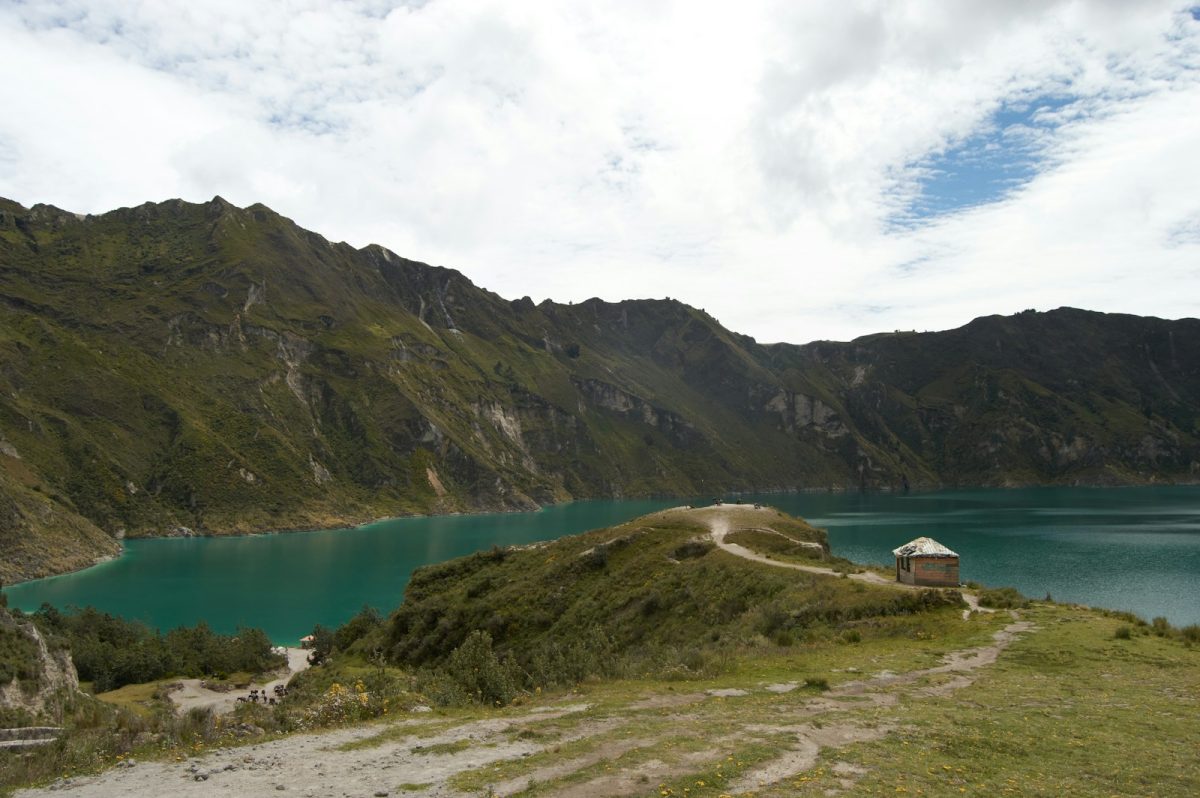
Safety Tips on the Trail
Safety is paramount while hiking the Quilotoa Loop. The terrain can be steep and challenging, so ensure you’re physically prepared for the elevation changes. Acclimatizing to higher altitudes before starting the hike can help prevent altitude sickness. It’s also wise to start your days early to avoid afternoon thunderstorms, which are common in the region. Always stay on marked trails and be cautious of loose rocks and slippery paths. Keeping an eye on your belongings is essential, especially in busier areas, to safeguard against theft.
Local Guides and Tours
While it’s possible to hike the Quilotoa Loop independently, many hikers choose to hire local guides or join organized tours. Local guides can enhance your experience by providing insights into the culture, flora, and fauna of the area. They can also help navigate the trails and ensure you don’t miss hidden gems along the way. There are various tour options available, from multi-day guided treks to day trips. If you prefer a more immersive experience, consider exploring these options to enrich your adventure in this stunning part of Ecuador.
Cultural Experiences on the Quilotoa Hike
Indigenous Communities
As you embark on the Quilotoa hike, you’ll find yourself walking through the heart of the Andes, home to several indigenous communities. These communities, primarily composed of the Quechua people, are rich in culture and tradition. Along the trail, you’ll encounter small villages like Isinlivi and Chugchilan, where locals are eager to share their way of life. This is a fantastic opportunity to engage with the customs, crafts, and stories of the indigenous people who have lived in the region for centuries.
The locals often showcase their traditional clothing, vibrant textiles, and handicrafts, which can be found in small shops throughout the villages. Don’t hesitate to interact with the community members; they are typically warm and welcoming, happy to share their traditions and perhaps teach you a few words in Quechua. Participating in these cultural exchanges not only enriches your hiking experience but also supports the local economy.
Local Cuisine to Try
One of the highlights of the Quilotoa hike is undoubtedly the local cuisine. Each village along the trail offers unique dishes that reflect the agricultural bounty of the region. In Isinlivi, try the traditional soup known as locro, made from potatoes and cheese—perfect for warming you up after a long day of hiking. Another must-try is fritada, a dish of fried pork served with corn and avocado, typically found in Chugchilan.
If you’re in Quilotoa, sample the trucha (trout) that’s often served fresh from local lakes. The hostels and lodges along the trail frequently prepare hearty meals, ensuring you have enough energy for your hikes. Pair your meals with a warm drink of mate de coca, made from coca leaves, which is said to help with altitude sickness. Enjoying these culinary delights is a great way to immerse yourself in the local culture while fueling your adventure.
Cultural Festivals
The Quilotoa region is vibrant with cultural festivals, especially if you time your visit right. The communities celebrate various events throughout the year, often showcasing traditional music, dance, and food. The Inti Raymi, or Festival of the Sun, is one of the most notable celebrations, taking place in late June to honor the sun god and mark the winter solstice. Visitors during this time can witness colorful parades, traditional dances, and communal feasts.
Another important festival is the harvest festival, where locals celebrate the bounty of their crops. These events not only provide insight into the rich cultural tapestry of the area but also offer a chance to interact with locals in a festive atmosphere. Participating in these festivals can make your Quilotoa hike even more memorable, as you experience firsthand the traditions that have shaped this beautiful region.
Post-Hike Activities Around Quilotoa
Exploring Nearby Villages
After completing the Quilotoa hike, take some time to explore the nearby villages that dot the landscape. Each village has its unique charm and is worth visiting. For example, Chugchilan offers stunning views and is known for its hospitable hostels and guesthouses. Here, you can relax, enjoy a meal, or even take a short hike to nearby viewpoints.
Isinlivi is another gem, with its picturesque landscapes and opportunities for cultural exchanges with the locals. You might even find a cozy spot to sit back and enjoy the tranquility of the Andes while sipping on a hot beverage. Exploring these villages not only allows you to unwind after your trek but also gives you a deeper appreciation for the local culture and lifestyle.
Relaxing in Nature
Once you’ve hiked the Quilotoa Loop, you might want to immerse yourself in the natural beauty of the area. The Quilotoa crater lake itself is a stunning sight, with its vibrant blue waters surrounded by dramatic cliffs. Spend some time walking along the rim, taking in the breathtaking views. There are various vantage points perfect for soaking up the scenery and snapping that perfect photo.
Additionally, you can venture into the surrounding landscapes for a more tranquil experience. The lush valleys and rolling hills are ideal for leisurely walks or even a picnic. With the fresh Andean air and stunning views, it’s an excellent way to relax and reflect on your hiking adventure.
Photography Opportunities
For photography enthusiasts, the Quilotoa area is a paradise. The dramatic landscapes offer endless opportunities to capture stunning shots. From the turquoise waters of the crater lake to the lush greenery and vibrant sunsets, every corner presents a picture-perfect moment.
While hiking, don’t miss the chance to photograph the indigenous communities and their colorful traditional attire. The interplay of culture and nature here creates a rich tapestry that is not only beautiful but also tells a story. Make sure to bring your camera and be ready to capture the stunning views and unique experiences that the Quilotoa hike and its surroundings have to offer.
Frequently Asked Questions about Quilotoa hike
What should I pack for the Quilotoa hike?
Packing wisely is crucial for a successful Quilotoa hike. Essential items include a comfortable backpack, sturdy hiking boots, and weather-appropriate clothing. It’s advisable to wear moisture-wicking layers, as temperatures can fluctuate throughout the day. Don’t forget a good rain jacket and sun protection, including a hat and sunscreen. Hydration is key, so carry enough water and consider packing electrolyte tablets. Snacks like nuts, dried fruits, and energy bars will help keep your energy up during the trek. Finally, trekking poles can be beneficial for navigating steep inclines and declines.
When is the best time to go on the Quilotoa hike?
The ideal time to embark on the Quilotoa hike is during Ecuador’s dry season, which runs from June to September. During this period, the weather is generally sunny and pleasant, perfect for hiking. While the rainy season from October to May can still provide sunny mornings, afternoon storms are common, which might interrupt your hiking plans. If you’re flexible with your schedule, aim for the dry season to maximize your chances of enjoying clear skies and stunning views throughout your trek.
Can I hike the Quilotoa Loop independently?
Yes, you can hike the Quilotoa Loop independently, but many hikers choose to hire local guides or join organized tours. Local guides can enhance your experience by providing insights into the culture, flora, and fauna of the area. They can also help navigate the trails and ensure you don’t miss hidden gems along the way. There are various tour options available, from multi-day guided treks to day trips.
What are some stunning viewpoints along the Quilotoa hike?
Along the Quilotoa hike, you can find several stunning viewpoints. One of the most breathtaking moments is witnessing the Laguna Quilotoa from the crater rim, where you can enjoy a panoramic view of the vibrant turquoise water. Hiking along the Quilotoa Rim also offers countless opportunities for breathtaking vistas, with designated viewpoints perfect for taking breaks. Additionally, the waterfall vista is a highlight, providing a serene environment and incredible photo opportunities amidst lush vegetation.
